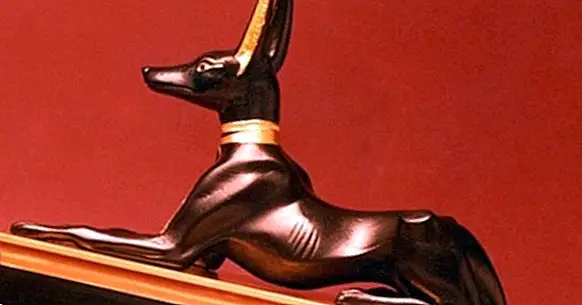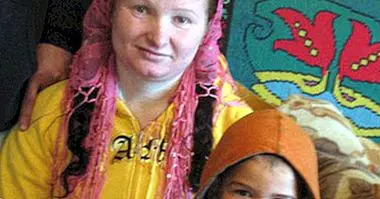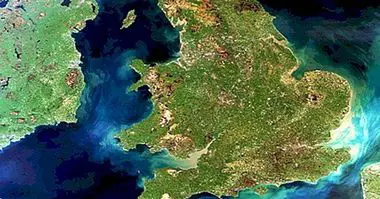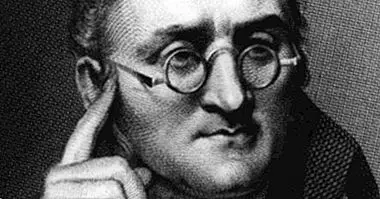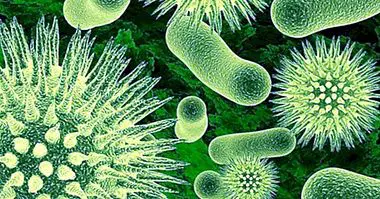25 Egyptian gods (biography, personality and legacy)
The Egyptian gods were the fundamental figures for the beliefs and rituals in ancient Egyptian society . These beliefs formed a complex system of interaction between the gods and the civilian people, who were convinced of the control and supernatural powers of these divinities, capable of altering the destiny of the people.
In this way, the attributes, offerings, prayers and other rituals dedicated to the Egyptian gods, were exclusively directed to win the sympathy of the same and to have their favors.
On the other hand, a well-known figure of Ancient Egypt is the Pharaoh that, in addition to governing, served as a link between the deity and the people . Citizens expressed all kinds of obeisances to keep "happy" their gods and that they maintained a state of order and permanent peace.
- Maybe you're interested: "The history of the symbol of Psychology (Ψ)"
The most important Egyptian gods
Below you can find a list of the most significant Egyptian gods, with a brief description of each and explanations about the influence they had throughout history.
- Related article: "Types of religion (and their differences of beliefs and ideas)"
1. Geb
He was the father god of Seth, Nephythys and Osiris, and used to be depicted as a man with a goose on his head. He was not credited with any type of cult of his own because of his status as an earthly god. It was a symbol of fertility, and the earthquakes in Egypt were related to the god Geb with their laughter.
2. Ammit
The body of this female god It was composed of three different animals: lion, crocodile and hippopotamus . Unlike the rest of the gods, Ammit was considered a demon, and was feared for everything he represented (death).

3. Shu
Father of Nut and Geb, and husband of Tefnut. Together with his wife, they were the first Egyptian gods created by Atum . He was the god of air and sunlight; Shu's main task was to hold the body of the goddess Nun and thus separate the sky from the earth.
4. Nut
Goddess mother of Nephythys, Seth, Isis and Osiris. For the composition of its thin, thin and elongated body, It symbolized the sky . According to ancient Egypt, Nut swallowed the sun every evening and gave him light as the morning broke. Its graphic representation is in many temples, as well as in the coffins of the dead.
5. Amun
This god was also known as Ammon, and He was the principal deity of the city of Thebes . He was the patron of the pharaohs of the same city, and he was placed on the highest level of the pantheon along with the god Ra. The merger between Amun and Ra gave birth to the god Amun-Ra, and was baptized as "the king of the gods".
6. Anubis
This god was represented as a man with a jackal's head . Son of Seth and Nephythys, he was the protector of the dead. Anubis was in charge of bringing the dead to the day of his final judgment. It was also related to the process of mummification and preservation of bodies.

7. Amheh
He was a god of the underworld, whose name had the meaning of "devourer of eternity" . He was represented as a man with a cannon head who lived in a lake of fire.
8. Anat
This female goddess was highly regarded in ancient Egyptian culture. Many temples were dedicated , since it represented the goddess of war. The god Ramses himself named his daughter Bint Anat (daughter of Anat in Arabic).
9. Bes
Contrary to the rest of the gods, Bes was drawn with the look to the front, and not in profile . He was a plump, short-limbed man with his tongue out, and was considered the god of childbirth. It is believed that Bes scared the demons at night and protected people from dangerous animals.
10. Hapi
He was the god that represented the flow of the Nile River. He was a man with big breasts and belly and an ornamentation on the head made of aquatic plants. It is believed that he lived in the caves of the river and his cult was forged around the city of Aswan .

11. Horus
Enemy of the god Seth, this god was the son of Isis and Osiris . His representation has always been diffuse: some Egyptologists say he was a man with a hawk's head, others like a whole hawk and some claim that Horus was a boy with curls sitting in the lap of his mother.
After killing the god Seth, he became the king of Egypt, was god of heaven and was considered the protector of the kings.
12. Imhotep
He was one of the few commoners who was granted a divine status . He was an expert Egyptian mathematician and served as chancellor during the time of the Third Dynasty.He himself had his own grave built in what would be his last house (it has been hidden since then and his whereabouts have not yet been known).
13. Isis
Fundamental figure in the mythology of ancient Egypt, Isis was wife of Osiris and mother of Horus. It was related to funeral rituals and it is said that he created the first mummy with the dismembered remains of Osiris .
When he resurrected Osiris, he gave life to Horus, for which he was also considered the goddess of life, healing and a protector of kings. For the ancient culture, Isis represented the ideal wife, loving, devoted and loving.

14. Nephythys
Daughter of Geb and Nut, sister of Isis, wife of Seth and mother of Anubis, this goddess was known as the "lady of the palaces". Like the goddess Isis, Nephythys is considered the Egyptian goddess protector of the dead .
15. Osiris
One of the most important gods, was the first king of Egypt. It was assumed that it was he who brought civilization to the human race. Resurrected by his wife Isis, he thus became the god of the underworld and the chief judge of death .
16. Ra
He was the supreme god of the sun, represented as a man with a hawk's head . Each night he traveled to the underworld to fight evil and chaos, and at dawn he was reborn. The Egyptian kings claimed to be direct descendants of Ra, so they called themselves "Sons of Ra".
17. Seth
He was the son of Geb and Nut, brother of Osiris. He was considered the god of darkness, confusion and chaos. He was depicted as a man with a long-nosed head and long ears, possibly the skull of an ant-eater. Seth killed his brother and he stole the throne of Egypt, and most of the gods hated it. Horus managed to destroy Seth, in what was considered the battle between good and evil.

18. Tefnut
Goddess of moisture and corrosion, she was the wife of Shu and mother of Nut and Geb. Together with her husband, they were the first gods created by Atum. It has been represented in two ways: woman with the head of a lion or a lioness .
19. Ptah
He was considered as the creator of the world through his thoughts and prayers, and for that reason he was considered the creator god. Ptah was related to the artisans and he had a temple in his honor.
20. Nefertum
According to Egyptian mythology, it was first a lotus flower that existed during the creation of the world and emerged from the source of life. He was considered the son of the creator god, Ptah, and the goddess Sekhmet . He was typically depicted as a young, handsome, well-built man.

21. Mehen
Egyptian god represented by a large serpent He was also considered another protective deity. He made incursions with the god Ra during his nocturnal descent into darkness (remember that Ra was the protector of good).
22. Khonsu
His name means "traveler" , maybe related to the trip to the moon every night. This god had a leading role in the creation of life and creatures. In this way he was considered the god of the moon.
23. Khnum
He is one of the oldest Egyptian gods in mythology, and is depicted as a man with a ram's head. Originally considered the source of the Nile River , he was also considered the creator of the children, making them from clay to introduce them into the uteruses of their mothers.

24. Ishtar
She was the goddess of love, fertility, sex, war and power. She was Anu's daughter. It is believed that he was the divine personification of the planet Venus.
25. Khepri
This Egyptian god is the favorite of science fiction novels and movies. It was related to the blue beetle . Khepri symbolizes creation and rebirth. He was drawn like a man with a beetle's head.

